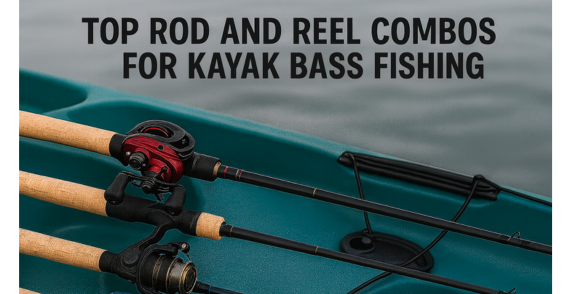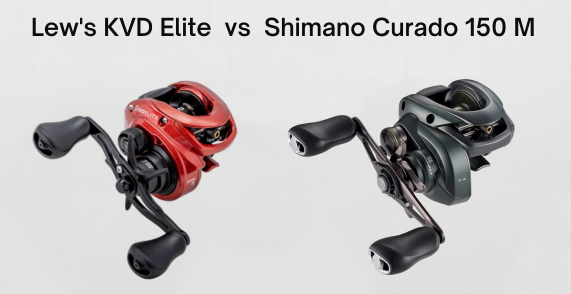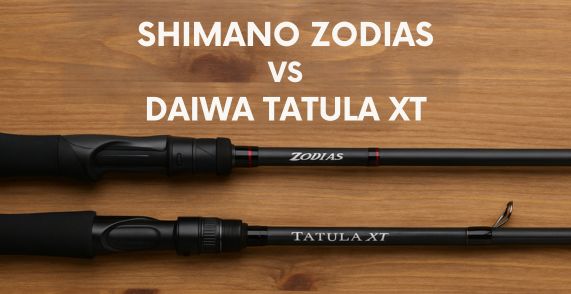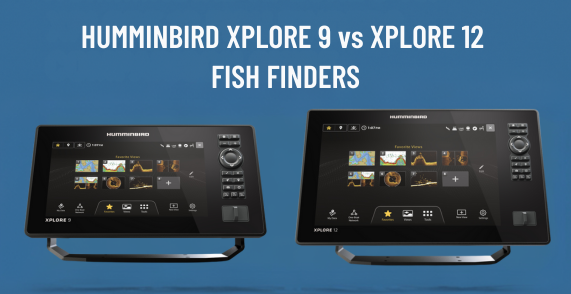In This Post
- 1 Key Takeaways:
- 2 Kayak Bass Fishing Demands Specialized Gear
- 3 Essential Rod Characteristics for Kayak Performance
- 4 Selecting the Right Reel for Your Kayak
- 5 Top Rod and Reel Combos by Application
- 6 The Two-Rod Strategy: Maximum Versatility in Limited Space
- 7 Protect Your Investment: Maintenance Tips for Kayak Fishing Gear
- 8 Making Your Final Selection
- 9 Conclusion: Your Perfect Setup Awaits
Key Takeaways:
- Rod lengths between 6’6″ and 7′ offer the ideal balance of control and casting distance for kayak bass fishing
- Medium to medium-heavy power rods with fast action work best for limited rod storage in kayaks
- A two-rod strategy (spinning setup for finesse and baitcasting for power techniques) covers most bass fishing scenarios
- Purpose-built kayak rods like the St. Croix Mojo Yak feature shorter handles to prevent interference with PFDs
Kayak Bass Fishing Demands Specialized Gear
Successful kayak bass fishing requires specialized gear that addresses the unique challenges of this fishing platform.
Unlike conventional bass boats, kayaks offer limited space, require fishing from a seated position, and present different angles for casting and fighting fish.
We at Fishing Zenith understand that standard rod and reel combinations often fall short for the kayak angler, leading to frustration and missed opportunities.
The confined space of a kayak creates specific demands for your fishing equipment.
Traditional bass fishing setups with long rods and extended handles frequently catch on personal flotation devices (PFDs), making casting awkward and inefficient.
Additionally, the seated position alters the dynamics of hooksets and fish fighting, requiring rods with appropriate power and action to compensate for the reduced leverage.
Exposure to water is another significant factor in kayak fishing that influences gear selection. Your equipment faces constant splashing, occasional submersion, and high humidity levels.
This environment demands rods and reels built with corrosion-resistant components and sealed drag systems to maintain performance over time.
The limited storage capacity of kayaks also means anglers must carefully consider each piece of equipment they bring aboard.
Rather than carrying specialized rods for every technique, kayak bass anglers need versatile tools that can handle multiple applications while occupying minimal space.
Essential Rod Characteristics for Kayak Performance
1. Length: 6’6″ to 7′ for Ideal Control in Tight Spaces
Rod length significantly impacts your effectiveness as a kayak angler.
While conventional bass fishing often employs rods 7′ to 7’6″ or longer, the kayak environment benefits from slightly shorter options. Rods between 6’6″ and 7′ provide the optimal balance of casting distance and control for most kayak bass fishing applications.
Shorter rods offer several advantages on a kayak. They’re easier to maneuver in tight spaces, reducing the likelihood of tangling with your kayak’s rigging or hitting nearby obstacles.
When fighting a fish, a shorter rod keeps the battle closer to the kayak, giving you better leverage from the seated position. This control is particularly valuable when a bass makes a sudden run under your watercraft.
Longer rods (over 7’6″) can be unwieldy in the confines of a kayak, creating awkward casting angles and increasing the risk of striking the water during your backcast.
They also make it more challenging to land fish, as the extended length forces you to reach farther from your center of gravity when netting or handling your catch.
2. Power: Medium to Medium-Heavy for Versatility
Rod power refers to the blank’s resistance to bending and directly affects your ability to control both lures and fish. For kayak bass fishing, medium to medium-heavy power rods offer the greatest versatility across techniques.
Medium power rods provide sufficient strength for most presentations while maintaining the sensitivity needed to detect subtle bites.
They excel with moving baits like spinnerbaits, chatterbaits, and medium-sized crankbaits. They also perform well with Texas-rigged soft plastics and lighter jigs.
Medium-heavy power rods deliver the backbone necessary for extracting bass from heavy cover—a critical capability when fishing around fallen trees, thick vegetation, or dock pilings.
This power rating handles heavy jigs, larger Texas rigs, and topwater frogs effectively. It also provides the strength needed to drive single hooks through thick plastic baits or a bass’s bony jaw.
3. Action: Fast for Precision, Moderate for Treble Hooks
Rod action describes where the blank bends under pressure and how quickly it returns to its original position. This characteristic significantly impacts both casting accuracy and hookset effectiveness—both crucial elements for kayak bass fishing success.
Fast action rods, which bend primarily in the upper third of the blank, provide excellent sensitivity and crisp hooksets.
This makes them ideal for techniques requiring precise presentations and immediate hook penetration, such as jigs, Texas rigs, and wacky rigs.
The quick response of a fast action rod compensates for the limited leverage available when setting the hook from a seated position.
Moderate action rods bend deeper into the blank, creating a more parabolic curve under pressure.
This forgiving action excels with treble-hooked lures like crankbaits and jerkbaits, absorbing the shock of a hard strike and preventing hooks from tearing free during the fight.
The gradual loading of moderate action rods also contributes to longer, smoother casts—beneficial when covering expansive flats or fishing offshore structure.
4. Handle Design: Shorter Butts Prevent PFD Interference
Handle design is often overlooked but plays a critical role in kayak fishing efficiency.
Standard bass fishing rods typically feature extended butt sections that create leverage for powerful hooksets when standing on a boat deck.
However, these long handles become liabilities in a kayak, frequently catching on your PFD during casts and creating awkward angles for manipulation.
Purpose-built kayak fishing rods like the St. Croix Mojo Yak series feature shortened rear grips specifically designed to prevent this interference.
The reduced handle length allows for fluid casting motions without sacrificing comfort or control. This design also facilitates skip casts under docks or overhanging vegetation—a technique frequently employed from the low-profile vantage point of a kayak.
Ergonomic handle materials enhance grip security in wet conditions, a common concern for kayak anglers.
High-quality cork or EVA foam provides reliable traction, while some premium models incorporate specialized non-slip compounds that maintain their grippy texture regardless of moisture level.
Selecting the Right Reel for Your Kayak
1. Spinning vs. Baitcasting: Different Tools for Different Jobs
The spinning versus baitcasting debate gains additional importance for kayak bass anglers. Both reel types have distinct advantages in different scenarios, and most experienced kayak anglers use both in their arsenals.
Spinning reels excel in several kayak-specific situations. Their simple operation remains consistent in windy conditions—a frequent challenge on open water.
The fixed spool design prevents backlashes during awkward casting angles or when fighting against gusty crosswinds. Spinning reels also handle lighter lures more effectively, making them ideal for finesse presentations like drop shots, Ned rigs, and small swimbaits.
Baitcasting reels provide superior power and accuracy once mastered.
Their direct drive system offers enhanced cranking strength when extracting bass from thick cover—a crucial advantage when fishing around laydowns, vegetation, or dock pilings.
The thumb control enables precise placement of lures under overhanging obstacles, a common target for kayak anglers seeking shade-loving bass. Baitcasters also typically feature higher gear ratios, allowing for quicker line pickup when a hooked fish charges toward your kayak.
2. Drag Systems: Your Insurance Against Big Fish Runs
A smooth, reliable drag system is particularly critical when fighting bass from a kayak.
Unlike in a bass boat, where you can move around to follow a running fish, kayak anglers must rely on their drag to absorb sudden surges and directional changes.
Quality drag systems provide consistent pressure throughout the fish’s run, preventing line breakage during those critical moments when a bass dives under your kayak or makes an unexpected surge toward heavy cover.
Carbon fiber drag washers offer superior heat dissipation during extended fights, maintaining consistent performance even when battling larger-than-expected bass.
The drag setting process requires special consideration for kayak anglers. A good rule of thumb is to set your drag at approximately 25-30% of your line’s breaking strength.
This provides sufficient pressure to tire the fish while allowing line to slip under sudden strain—essential when your mobility is limited by the kayak’s confines.
3. Gear Ratio: Matching Speed to Your Technique
Reel gear ratio indicates how many times the spool rotates with each handle turn, directly affecting retrieve speed and power.
For kayak bass fishing, versatility in gear ratios helps compensate for the limited number of rod and reel combos you can carry.
Medium gear ratios (6.0:1 to 6.5:1) offer the best all-around performance for kayak anglers. These ratios provide sufficient speed for most techniques while maintaining adequate power for fighting fish.
If you can only bring two reels, a medium-ratio spinning reel paired with a high-speed baitcaster (7.0:1 or higher) gives you coverage for most fishing situations.
Higher gear ratios excel when fishing topwater lures or when you need to quickly pick up slack line as a fish charges toward your kayak.
Lower gear ratios provide additional cranking power for deep-diving crankbaits or when winching bass from thick cover.
4. Construction: Durability in Wet Conditions
The kayak environment demands reels built to withstand frequent water exposure. Quality construction materials and sealed components significantly extend the lifespan of your equipment.
Sealed drag systems prevent water intrusion during the inevitable splashes and spray encountered on a kayak.
Sealed bearings resist corrosion from both freshwater and saltwater exposure, maintaining smooth operation over time. Aluminum bodies and spools offer the best balance of durability and weight, with sealed bearings providing additional protection against the elements.
The PENN Battle III series exemplifies the durability needed for kayak fishing, with its full metal body construction and sealed drag system designed to withstand harsh conditions.
Similarly, the Shimano Stradic FL incorporates the company’s X-Protect and water-resistant drag to maintain performance despite frequent water exposure.
Top Rod and Reel Combos by Application
1. St. Croix Mojo Yak Combo: Purpose-Built for Kayaks
The St. Croix Mojo Yak series represents one of the few rod lines specifically engineered for kayak anglers. Paired with a quality reel, these rods deliver exceptional performance from the seated position. Fishing Zenith recommends these purpose-built rods for serious kayak bass anglers.
Key features include:
- Shorter butt sections designed to prevent interference with PFDs
- Premium SCIII carbon blanks for sensitivity and strength
- Available in both spinning and casting versions
- Medium to medium-heavy powers with fast actions
For an optimal all-around kayak setup, pair the 7′ medium-heavy fast action Mojo Yak casting rod with a Shimano SLX XT 150 reel (7.2:1 gear ratio).
This combination handles jigs, Texas rigs, spinnerbaits, and other power fishing techniques with authority. The shortened handle provides unrestricted casting, while the sensitive blank transmits subtle bites effectively.
For finesse applications, the 6’8″ medium-light fast action Mojo Yak spinning rod matched with a Pflueger President 30 creates a lightweight, balanced combo that excels with drop shots, Ned rigs, and small swimbaits.
This pairing delivers the sensitivity needed to detect light bites while maintaining sufficient backbone to control hooked fish.
2. Abu Garcia Veritas: Finesse Fishing Excellence
When targeting pressured bass or fishing in clear water conditions, finesse techniques often produce when power fishing fails. The Abu Garcia Veritas series offers exceptional performance for these subtle presentations.
A 6’9″ medium-light power Veritas spinning rod paired with an Abu Garcia Revo X spinning reel (30 size) creates a balanced, sensitive package for finesse fishing from a kayak. This combination excels with:
- Drop shot rigs in depths up to 25 feet
- Ned rigs around rocky structure
- Wacky-rigged Senkos around docks and laydowns
- Small swimbaits over points and flats
The 30-ton graphite blank provides outstanding sensitivity for detecting the lightest bites, while the Texas-rigged Lure Keeper keeps rigged baits secure during transport.
The Revo X’s Carbon Matrix drag system ensures smooth performance when fighting larger bass on lighter line.
3. Daiwa Tatula CT PMC: Power Fishing Workhorse
For extracting bass from heavy cover, the Daiwa Tatula CT PMC (Performance Main Color) combo delivers exceptional power and reliability. This setup excels when pitching to laydowns, flipping into vegetation, or working frogs through surface mats.
The 7’3″ heavy power, fast action Tatula rod provides the backbone needed to drive hooks home and control fish in close quarters. The Tatula CT reel’s T-Wing System improves casting distance while reducing backlashes—a valuable feature when making precise casts from a seated position.
This combination performs admirably with:
- Heavy jigs (1/2 oz and up)
- Texas-rigged creature baits
- Topwater frogs
- Punch rigs for penetrating thick vegetation
The 100-size Tatula CT balances perfectly with the rod, creating a comfortable package for all-day fishing. The reel’s 7.3:1 gear ratio provides quick line pickup, essential when a bass grabs your lure and charges toward the kayak.
4. PENN Battle III: Durability Champion
Kayak fishing subjects gear to harsh conditions, including frequent water exposure, UV radiation, and physical impacts. The PENN Battle III combo stands out for its exceptional durability in these challenging environments.
The full metal body construction and sealed drag system withstand the rigors of kayak fishing, while the carbon fiber washers provide smooth performance when battling larger bass.
Dura-Guides prevent insert pop-outs common with heavy braided lines, ensuring consistent performance over many fishing trips.
A 7′ medium-heavy Battle III spinning combo spooled with 20 lb braided line provides the versatility needed for various kayak bass fishing scenarios:
- Offshore fishing around submerged structure
- Working deep-diving crankbaits over points and ledges
- Carolina rigs across flats and drop-offs
- Heavy swimbaits for targeting trophy bass
While not as specialized as some other options, the Battle III’s durability makes it an excellent choice for anglers fishing in harsh conditions or those who prefer a no-nonsense setup that will withstand years of abuse.
5. Ugly Stik Elite: Budget-Friendly Reliability
Not every quality kayak fishing setup requires a significant investment. The Ugly Stik Elite series delivers legendary durability and solid performance at an accessible price point—ideal for beginners or as a reliable backup combo.
The 7′ medium-heavy Elite spinning rod paired with a Pflueger President XT 30 reel creates a versatile combination for under $150. This setup handles a wide range of techniques including:
- Texas-rigged soft plastics
- Medium-weight jigs
- Spinnerbaits and chatterbaits
- Shallow-running crankbaits
The Ugly Stik’s Ugly Tech construction combines graphite and fiberglass for improved sensitivity without sacrificing the brand’s famous durability.
One-piece stainless steel Ugly Tuff guides eliminate insert pop-outs common with braided line, while the cork handles provide secure grip in wet conditions.
The Two-Rod Strategy: Maximum Versatility in Limited Space
Most kayak bass anglers face significant constraints on the number of rod and reel combos they can carry. While bass boat anglers might bring 10-15 specialized setups, kayak anglers must typically limit themselves to 3-4 rods at most. This limitation necessitates a strategic approach to maximize versatility.
The optimal two-rod strategy focuses on covering the broadest range of techniques with minimal equipment. This approach involves:
- A versatile spinning setup (medium-light or medium power) for finesse applications and lighter lures. This combo handles:
- Drop shot rigs
- Ned rigs
- Wacky rigs
- Small swimbaits
- Finesse jerkbaits
- A powerful baitcasting setup (medium-heavy or heavy power) for techniques requiring stronger hooksets and fish extraction. This combo manages:
- Jigs and Texas rigs
- Topwater frogs
- Spinnerbaits and chatterbaits
- Pitching and flipping to heavy cover
With just these two setups, you can effectively cover approximately 80-90% of bass fishing techniques. For the spinning combo, a 6’8″ to 7′ medium power rod paired with a 2500-3000 size reel provides the ideal balance of versatility and performance. For the baitcasting setup, a 7′ medium-heavy power, fast action rod matched with a 7.1:1 or higher gear ratio reel delivers the power needed for larger lures and fighting fish in heavy cover.
If space allows for a third rod, consider adding a moderate action baitcasting setup specifically for treble-hooked moving baits like crankbaits and lipless cranks. This specialized rod improves hookup ratios with these lures while reducing the likelihood of fish coming unbuttoned during the fight.
Optimizing Your Line Selection
The choice of fishing line is critical for kayak bass fishing success. The limited rod capacity makes versatile line setups essential.
Braided line offers several advantages for kayak anglers:
- Superior strength-to-diameter ratio allows more line on smaller reels
- No stretch provides enhanced sensitivity and solid hooksets from the seated position
- Excellent durability withstands abrasion from kayak components
- Floating properties help keep line above submerged obstacles
A 20-30 pound braided mainline serves as an excellent foundation for most kayak bass fishing applications. This strength handles most techniques while providing insurance against unexpected encounters with larger fish or heavy cover.
Fluorocarbon leaders complete the ideal setup. A 6-8 foot leader of 10-20 pound fluorocarbon (matched to the technique) delivers:
- Near invisibility underwater for stealthy presentations
- Abrasion resistance when fishing around rocks, docks, or brush
- Appropriate sink rate for subsurface presentations
The braided mainline to fluorocarbon leader connection is best made with a reliable knot like the FG knot, Alberto knot, or double uni knot. Practice these connections before hitting the water to ensure they’ll hold under pressure.
Protect Your Investment: Maintenance Tips for Kayak Fishing Gear
The kayak environment subjects fishing equipment to more moisture, impacts, and stress than conventional boat fishing. Proper maintenance is essential to protect your investment and ensure reliable performance.
Post-Trip Care
After each fishing trip, especially in saltwater environments, thoroughly rinse your rods and reels with fresh water. Use a light spray rather than high pressure, which can force water into sealed components.
Pay particular attention to reel seats, guides, and moving parts on reels.
Once rinsed, dry all equipment completely before storage. Microfiber towels effectively remove moisture from rod blanks, handles, and reel bodies.
Allow reels to air dry completely before placing them in storage bags or compartments.
Regular Maintenance
For reels, apply a light coating of reel oil to exposed moving parts every 5-10 trips. Focus on the line roller, bail arm pivots, and handle knobs for spinning reels. For baitcasters, lubricate the line guide, level wind, and handle components.
Check rod guides regularly for damage or insert separation that could damage your line. Run a cotton ball through each guide—any snags indicate rough spots that need attention.
Inspect reel seats for corrosion or looseness, tightening as needed.
Seasonal Service
At least once per season, perform a more thorough maintenance routine:
- Disassemble and clean reel spools
- Replace worn line with fresh monofilament, fluorocarbon, or braid
- Check drag washers for wear and replace if necessary
- Tighten loose components on both rods and reels
- Apply a protective coating to rod blanks to guard against UV damage
Storage Considerations
Store rods horizontally or vertically with support at both ends to prevent blank warping. Never leave rods leaning against walls for extended periods. For reels, back off drag settings during storage to reduce pressure on drag washers.
For kayak transport, consider using protective rod sleeves to prevent damage from impacts or UV exposure. Rod leashes provide additional security against accidental loss—a worthwhile investment considering the cost of quality combos.
Making Your Final Selection
Choosing the perfect rod and reel combo for kayak bass fishing ultimately comes down to your personal fishing style, budget, and the specific waters you target. We recommend considering these final factors when making your decision:
Fishing Environment
The primary waterways you fish significantly influence ideal gear selection:
- For fishing shallow, vegetation-rich lakes, prioritize shorter rods (6’6″ to 7′) with medium-heavy or heavy power for punching through cover.
- For open reservoirs with deeper water, longer rods (7′ to 7’6″) with medium power accommodate longer casts and deeper presentations.
- For river fishing with current, focus on durable combos that can withstand impacts with rocks and timber.
Budget Considerations
Quality doesn’t always require maximum investment. Even budget-conscious anglers can assemble effective kayak bass fishing setups:
- Entry-level: Ugly Stik GX2 or Elite rods paired with Pflueger President reels provide excellent value under $150 per combo.
- Mid-range: Abu Garcia Veritas rods with Revo X reels or Daiwa Fuego rod/reel combos deliver premium performance between $200-$300.
- Premium: St. Croix Mojo Yak rods matched with Shimano Stradic FL reels represent top-tier performance at $350-$500 per setup.
Remember that durability matters more in the kayak environment than in other fishing settings. Sometimes investing more upfront yields equipment that lasts significantly longer under challenging conditions.
Physical Comfort
The rods and reels you select should match your physical capabilities and comfort needs for long days on the water:
- Rod weight becomes increasingly important during all-day kayak fishing sessions—lighter rods reduce fatigue.
- Reel ergonomics (handle size, weight distribution, drag adjustment accessibility) significantly impact comfort.
- Rod handle materials should provide secure grip even when wet without causing blisters or discomfort.
Whenever possible, test potential combos before purchasing. The feel of a rod and reel in your hands reveals subtleties that specifications alone cannot convey.
Conclusion: Your Perfect Setup Awaits
Selecting the ideal rod and reel combo for kayak bass fishing involves balancing specific technical requirements with personal preferences and fishing conditions.
While no single combination works perfectly for every angler in all situations, the recommendations outlined in this guide provide a solid foundation for making informed decisions.
Remember these key principles as you assemble your kayak bass fishing arsenal:
- Prioritize rods between 6’6″ and 7′ with medium to medium-heavy power for maximum versatility.
- Select reels with sealed components and smooth drag systems to withstand the rigors of kayak fishing.
- Start with a two-rod approach—one spinning setup for finesse and one baitcasting rig for power techniques.
- Invest in quality where it matters most: drag systems, rod blanks, and guide construction.
- Maintain your equipment diligently to extend its lifespan in the challenging kayak environment.
With the right gear in hand and proper maintenance habits, you’ll maximize your success and enjoyment on the water.







